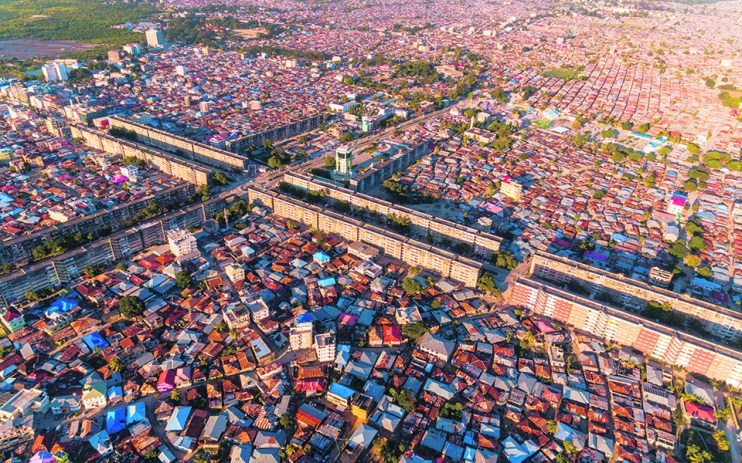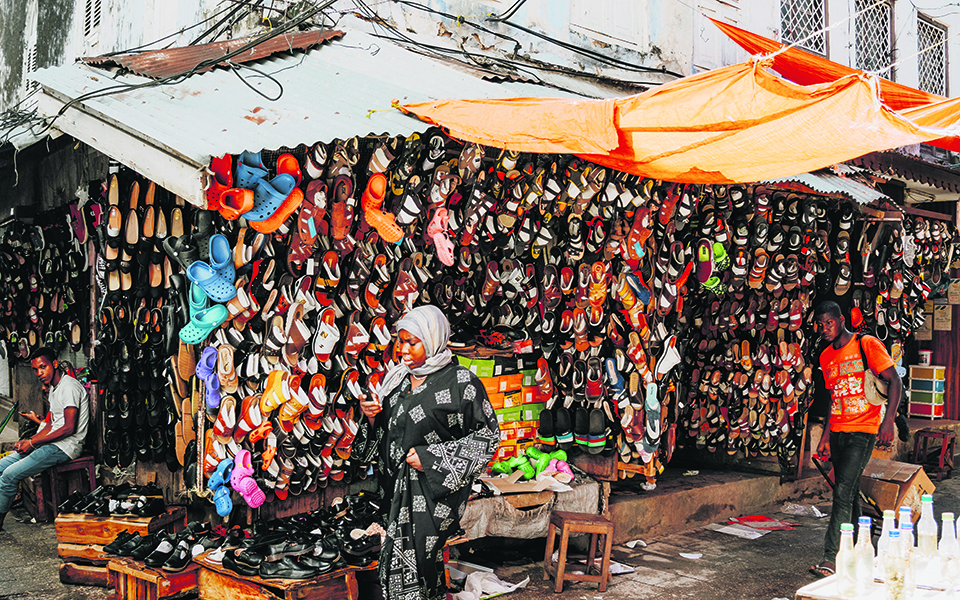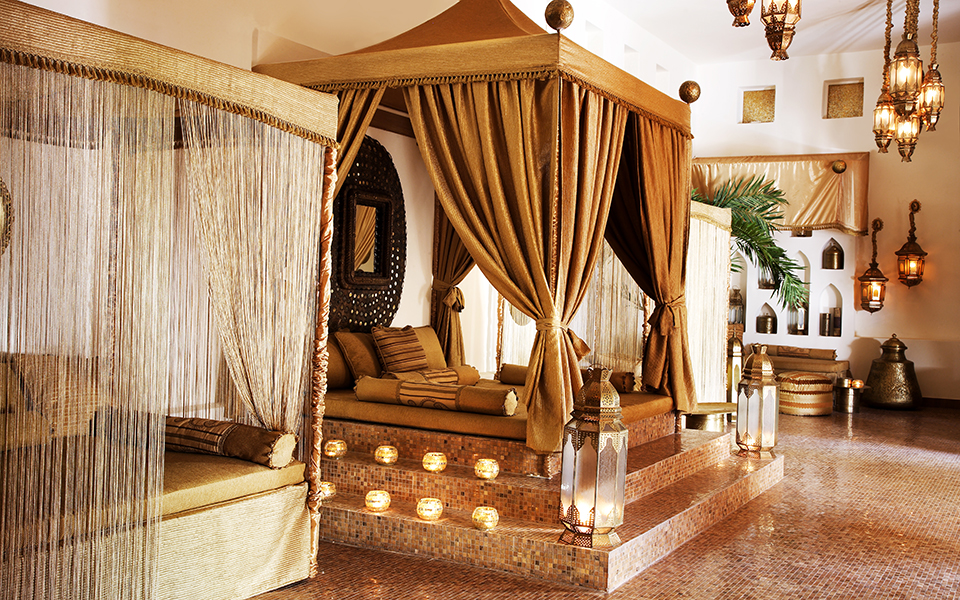Best of travel: A feast for the senses in Zanzibar

To tide us over until we’re able to travel again, we’re republishing classic travel stories from our archives. Today we revisit Noo Saro-Wiwa’s extravagent journey to the island of Zanzibar.
•••
Visiting tropical islands usually involves sacrificing the richness and depth of continental culture for the simplicity of ravishing sun, sea and sand. Zanzibar, however, is almost unique in letting you combine the ‘three esses’ with classic architecture and history – all in a space of less than 2,500 sq km.
This island off the coast of Tanzania in the Indian Ocean still evokes breathy clichés of ‘spices and eastern promise’ – and for good reason. At a time when a sense of the truly exotic is hard to come by, Zanzibar still plunges you into an exuberantly alien universe.
The main town, Stone Town, is a UNESCO World Heritage site and a place where you can happily lose yourself in labyrinthine alleyways. Narrow streets are flanked by crumbling coral stone buildings with latticed rosewood balconies. The architecture – a composite of styles from Africa, Arabia, India and Europe – is a history lesson in itself. The renowned carved wooden doors are a legacy of the Omani empire that once ruled Zanzibar in the late 17th century and made it its capital in 1840.

Other doors are in Gujarati style, made by craftsmen from India who settled here when Zanzibar came under British rule. These teak doors are distinguishable from the Omani ones by their rounded tops. They are studded with large brass knobs – once used as defences against charging war elephants back in India but kept for decorative effect. Gujarati Indians, along with ethnic Parsees from Bombay, formed a middle stratum between the colonial authorities and the African slaves.
Slavery laid the foundation of Zanzibar’s economy, which grew hugely between the 17th and 19th centuries. From Stone Town’s slave market, humans were shipped to Arabia and beyond by men like Tippu Tip, a 19th-century merchant who trafficked up to 10,000 people and became very wealthy as a result. His mansion – the beautiful legacy of an ugly business – still stands and will be re-opened to visitors when current refurbishments are completed.
Not all buildings enjoy such a makeover – 80 per cent of Zanzibar’s edifices are dilapidated as a result of nonchalance or lack of funds. Such elegant dereliction only adds to Stone Town’s authenticity. This is no tourist theme park: the town hums with bona fide life, from khat-chewing men in kufi hats, to the young boys jumping off the sea walls at sunset as the muezzin prayer call sounds. Tables at the Darajani market are piled with vanilla, nutmeg, ginger, saffron and rambutan fruits – reminders of the days when Zanzibar was an entrepôt for Indian Ocean trade in spices, fruits, precious metals and jewels.

The Islam practised here is relatively relaxed. You can see it in the way young men and women interact quite freely. I particularly enjoyed watching a clueless, European tourist in a mini dress, pleading with a man to let her enter a mosque and watch the all-male prayer. He gently implored her to stay away.
The liberalism only goes so far, however: Zanzibar’s most famous son, Farrokh Bulsara – otherwise known as gay icon Freddie Mercury – isn’t celebrated too loudly around here. But the house in which Queen’s lead singer grew up is open to visitors who can view photographic memorabilia of the star.
Before heading to the east coast beaches I visit the Anglican Cathedral and pay tribute to the slaves who helped build Zanzibar. The cathedral’s altar is pointedly constructed on the exact spot where the slave market’s main whipping post once stood. Outside there is a museum dedicated to the slave trade, along with a stone monument to the slaves – four human effigies inset in the ground. You can also step inside the tiny-windowed chambers where captives were held in claustrophobic and unsanitary conditions.
Baraza Resort
After a one-hour drive I arrive at Baraza Resort. One of the most beautiful 5-star all-inclusive hotels on the east coast, recent guests at this family-friendly establishment include Queen’s guitarist Brian May. A path winding through a coconut grove delivers you at reception where a series of Omani arches provide an arresting sightline from the lobby to the ocean. The hotel’s architecture and décor reflects Zanzibar’s African, Omani and Indian heritage. Curved corridors are lined with intricate brass lanterns, hand-carved wooden furniture, antiques and Swahili arches. Even the golden umbrella stands look like objets d’art.
I’m shown to one of the dozen luxury villas arranged among fuschia flower bushes and palm trees. Each villa is decorated in an elegant palette of creams, yellows and gold, and it includes a verandah, private garden and plunge pool. The four-poster bed is so wide I’m crawling on all fours to get from one bedside table to the other. It’s a battle to leave the villa and enjoy some of the many activities the resort has to offer, but I get there eventually.
First I go on a reef safari. A qualified guide walks us out towards the Indian Ocean reef at low tide. As we trundle more than 100 metres from the shore, the ebbing waters reveal the coral and marine life that teems here. Our guide points out the salt eels, spider starfish, sea cucumbers, zebra-striped sea snakes and moray eels wriggling by our feet. Equally beautiful is the sight of Zanzibari women bent over the water nearby. Each day they head out into the low tide to catch octopi hiding in the rocks. The ladies’ colourful, ankle-length dresses kiss the ocean’s shallow surface, creating the illusion that they’re walking on water, like goddesses of the sea.
Baraza Resort also organises walks in the nearby Jozani Forest, a leafy antidote to the big skies and oceans. Jozani is a remnant of the wilderness that once covered much of Zanzibar. Fifty species of butterfly bounce around a canopy perfumed with eucalyptus trees and carpeted in parts by a tangle of mangroves. Swinging among the tree branches are Zanzibar Sykes’ monkeys and the red colobus monkeys – the latter being the most endangered primates in Africa. Weirdly, the colobus has four fingers and no thumbs, yet it still has five toes on each foot.

Back at Baraza Resort I head to the Frangipani Spa for an intense Balinese massage. The masseuse steamrollers the knots out of my back before sending me to a recovery lounge. There, sprawled on a daybed in contented delirium, I squint at the golden lamps as they sparkle in the sunlight streaming through the windows.
Dinner is held in the exquisitely decorated Sultan’s Dining Room, one of Baraza’s four restaurants. The menu is extensive, the chef specialising in Indian cuisine. I stuff my gut with chicken tikka, pilau rice and a chicken wrap.
In the cool evening air, a Taarab band plays. Taarab music draws its influence from the African Great Lakes region, Middle East and India. The band – comprising a violin, accordion, double bass and vocalist – produces an Arabic melody with African percussion and call-and-response singing. The sound of it, along with my food and surroundings, combine to hit my sweet spot on all sensory fronts.
It’s a relaxing end to a beautiful stay.
The Zanzibar Collection: thezanzibarcollection.com (Breezes Beach Club & Spa, Zanzibar ~ The Palms, Zanzibar ~ Baraza Resort & Spa, Zanzibar ~ Zawadi Hotel, Zanzibar)
The Palacina Collection: thepalacinacollection.com (Palacina, Nairobi ~ Palacina Interiors, Nairobi ~ Palacina, Berlin ~ 506 On The River, Vermont, ~ Mountain Meadows Lodge, Vermont – Coming Soon!)